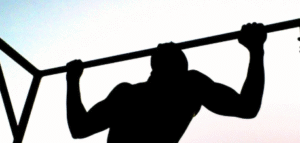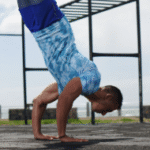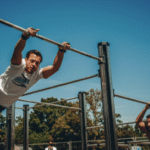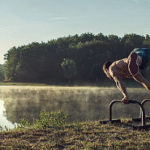How to Progress Your Calisthenics Workouts (A Houston Athlete’s Guide)
To achieve continuous results in calisthenics—whether your goal is hypertrophy, strength, or mastering advanced skills—you must systematically apply the principle of Progressive Overload . This means consistently challenging your muscles with a greater stimulus than they are accustomed to.
For Houston athletes, progress must be strategic to overcome physical plateaus and environmental challenges like extreme heat.
- The Core Principle: Progressive Overload in Calisthenics
Unlike weightlifting, where you add a plate, calisthenics requires manipulating four variables to make a bodyweight exercise harder.
Progression Method Mechanism of Overload Example
Increase Volume Doing more total work with the same movement. Increasing from 3 sets of 10 push-ups to 4 sets of 10 push-ups .
Increase Density Doing the same amount of work in less time. Completing a circuit of pull-ups, dips, and squats in 15 minutes instead of 20 minutes .
Increase Time Under Tension (TUT) Slowing the tempo of the movement, especially the lowering phase. Taking 4 seconds to lower during a pull-up (eccentric phase) instead of 2 seconds.
Increase Leverage/Difficulty Changing the body angle to shift the weight distribution, making the muscle work harder. Moving from Incline Push-ups to Floor Push-ups , or moving your feet closer together during a squat.
- Step-by-Step Progression for Key Movements
To ensure safe and efficient progression, follow a systematic road map for fundamental exercises before attempting advanced skills.
- Pull-Ups (Building Back and Biceps)
- Level 1 (Foundation): Dead Hangs (build grip strength) and Australian Pull-ups (inverted rows) with a straight body.
- Level 2 (Strength): Resistance Band Assisted Pull-ups (using a thick band looped around a bar at Memorial Park ). Focus on reducing band tension over time.
- Level 3 (Hypertrophy): Negative Pull-ups (jump to the top, lower slowly for 3–5 seconds). Once you can do 5-8 clean negatives, you are ready for full pull-ups.
- Level 4 (Advanced): Add a Weighted Vest or progress to Archer Pull-ups (unilateral work).
- Push-Ups (Building Chest and Triceps)
- Level 1 (Foundation): Wall Push-ups or Incline Push-ups (hands elevated on a bench).
- Level 2 (Intermediate): Floor Push-ups (focus on keeping the elbows tucked close to the body, maintaining the Hollow Body core).
- Level 3 (Advanced): Pike Push-ups (hips elevated, body in a V-shape) to build vertical shoulder strength, crucial for handstands.
- Level 4 (Mastery): Plyometric Push-ups (clapping) or Pseudo Planche Push-ups (hands turned backward, leaning forward).
- Squats (Building Leg Strength)
- Level 1 (Foundation): Bodyweight Squats (focus on depth and perfect form).
- Level 2 (Intermediate): Bulgarian Split Squats (one foot elevated on a bench or bar) to train single-leg strength.
- Level 3 (Advanced): Pistol Squat Progressions (using a resistance band or holding onto a pull-up rig for balance) to build functional, unilateral leg strength.
- Houstonian Strategy: Consistency and Safety
The Consistency Rule: The biggest threat to progress in Houston is inconsistency due to weather or traffic. Prioritize a routine you can maintain 4–5 times a week, utilizing the extended hours of an air-conditioned gym during the summer.
Avoid the Plateau with Varied Overload: Once you plateau on simply adding reps, shift your focus. If you can’t do more full pull-ups, focus on increasing the TUT on your existing pull-ups for three weeks, then go back to testing max reps.
Mobility as Progression: Dedicate time to flexibility training . Improving your range of motion (e.g., getting deeper into a squat or opening up your shoulders for a handstand) is a form of progress that unlocks stronger training positions and prevents injury.

How to Progress Your Calisthenics Workouts (A Houston Athlete’s Guide)
Route
Calisthenics Gym Houston Functional Bodyweight Training
Secondary phone: (346) 483-3195
Email: info@calisthenicsclubhouston.com
URL: https://calisthenicsclubhouston.com/
Monday 6:00 AM - 7:00 PM Tuesday 6:00 AM - 7:00 PM Wednesday 6:00 AM - 7:00 PM Thursday 6:00 AM - 7:00 PM Friday 12:00 PM - 6:30 PM Saturday 9:45 AM - 12:00 PM Sunday 3:00 PM - 5:00 PM





